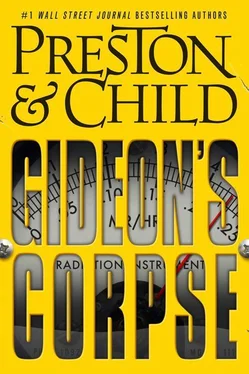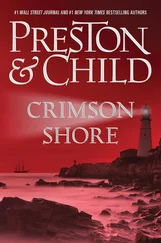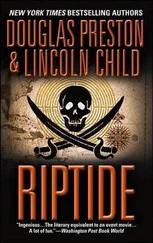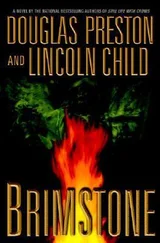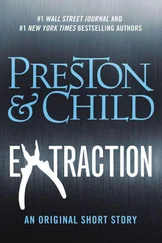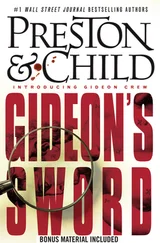It was drowned out in static and other voices.
“ …Pearson Street, near the self-storage… ”
“They got a hit,” Gideon told Fordyce. “A radioactive plume over Pearson Street.”
“Pearson Street? Jesus, we just passed it.”
“We’ll be the first on the scene. About time we got a break.”
Fordyce pulled the sedan into a four-wheel powerslide. A moment later they were screeching around the corner of Pearson. Several helicopters were hovering already, seeking the precise source, and sirens could be heard in the distance.
Pearson Street dead-ended at the railroad yards. The last buildings on the street were a massive, blank self-storage building, opposite a vacant lot strewn with trash, and some ancient warehouses. At the very end of the road stood a long, decrepit railroad storage shed.
“There,” Gideon said, pointing. “That shed in the railroad yard.”
Fordyce looked at him dubiously. “How do you know—?”
“See the broken lock? Let’s go.”
Fordyce drove up on the curb, screeching to a stop. They yanked on their suits, Fordyce grabbed two flashlights from the glove compartment, and they ran toward the shed. It was surrounded by a chain-link fence, but there were plenty of holes and tears in the fence and they quickly squeezed through. The sliding doors were chained, but the lock hung from only one link, its hasp cut.
Gideon shoved open the door. Fordyce switched on his flashlight, then handed the other to Gideon. Their twin beams revealed a disused space full of decaying piles of angle iron, ties, rails, rusted equipment, and piles of salt and crushed rock.
Gideon looked around frantically but could see nothing of interest. It was just one big, useless space.
“Damn,” said Fordyce. “Must have been one of those warehouses we passed.”
Gideon held up his hand, scanned the floor. There had been people walking here recently, a lot of scuff marks in the dust and grime. They led toward a far wall, where he could make out the huge double doors of a freight elevator. He sprinted over.
“There’s a level below this one,” he said, staring at the elevator panel. He punched the buttons, but they were dead.
Gideon cast around with his flashlight and quickly located the emergency stairs. He pushed through the door into the pitch dark of a stairwell. The sirens had now converged up above and he could hear muffled radios, slamming doors, loud voices.
Using their flashlights as guides, they made their way quickly down the stairs. The vast room at the bottom was largely empty, save for grids, hoists, and moving racks mounted from the ceiling. But there was an acrid stench of burned paper and plastic in the air, and as Gideon moved into the center of the room he made out, at the far end, a tight warren of spaces with shadowy, abandoned equipment. Fordyce had seen it, too, and they both walked over.
“What kind of a setup is this?” Fordyce asked, looking around.
Gideon had recognized it immediately, and it chilled him. “I’ve seen similar setups in historic photos at the Los Alamos bomb museum,” he said. “Old photos of the Manhattan Project. It’s a crude set of rails, poles, pulleys and ropes used to move radioactive material around without getting too close to it. Very low-tech but relatively effective, if you’re in martyr mode and don’t care about exposing yourself to elevated radiation.”
As he walked past the alcoves, peering into each, he could see more remote-handling apparatuses: crude slides and structures, pieces of shielding and lead boxes, along with discarded HE wires and detonators—and what he recognized, with another chill, was a broken high-speed transistor switch.
“Jesus,” said Gideon, his heart sinking. “I see everything here they’d need to build a bomb—including the high-speed transistors, maybe the most difficult thing to get besides the core itself.”
“What the hell’s that?” Fordyce pointed to another alcove, where Gideon could see a cage with bars and some food trash.
“Dog crate? Big one, by the size of it. Probably a rottweiler or a Doberman—to keep away the curious.”
Fordyce moved slowly, methodically, examining everything.
“There’s a fair amount of residual radiation here,” said Gideon, looking at the radmeter built into his suit. He pointed. “Over there, at that apparatus, is probably where Chalker fucked up and the mass went critical. It’s hotter than hell.”
“Gideon? Take a look at this.” Fordyce was kneeling before a pile of ashes, staring at something. As Gideon walked over, he could hear a babble of voices on the intercom, shouts and footsteps echoing from above. The NEST crew had entered the building.
He knelt beside Fordyce, trying not to stir the air and thus disturb the delicate pile. Masses of documents, computer CDs, DVDs, and other papers and equipment had been swept up into a large heap and all burned together, creating a gluey, acrid mess that still stank of gasoline. Fordyce’s gloved hand was pointing to one large, broken piece of ash at the top. As Gideon bent closer, his flashlight shone off its crumpled surface and he could just make out what it had been: a map of Washington, DC, with what appeared to be extensive notations in Arabic script. Several landmarks had been circled, including the White House and the Pentagon.
“I think we just found the target,” said Fordyce grimly.
There was a pounding of feet on the stairs. A phalanx of white-suited figures appeared at the far end of the room.
“Who the hell are you?” came a voice over the intercom.
“NEST,” said Fordyce crisply, standing up. “We’re the advance team—turning it over to you.”
In the reflected beam of his flashlight, Gideon caught Fordyce’s eye through the visor. “Yeah. Time to go.”
They had spent hours at the FBI field office in Albuquerque, filling out endless paperwork for a pool vehicle and expense account. Now they were finally on the road, driving to Santa Fe, the great arc of the Sandia Mountains rising on their right, the Rio Grande to their left.
Even here, they met a steady stream of overloaded cars heading the opposite direction. “What are they running from?” Fordyce asked.
“Everyone around here knows that if nuclear war breaks out, Los Alamos is a primary target.”
“Yeah, but who’s talking about nuclear war?”
“If the terrorist nuke goes off in DC, God only knows what might happen next. All bets are off. And what if we find evidence the terrorists got the nuke from a place like Pakistan or North Korea? You think we wouldn’t retaliate? I can think of plenty of scenarios where we might see a sweet little mushroom cloud rising over that hill. Which, by the way, is only twenty miles from Santa Fe—and upwind of it.”
Fordyce shook his head. “You’re getting way ahead of yourself, Gideon.”
“These people don’t think so.”
“Jesus,” said Fordyce. “We must’ve spent four hours with those damn people. And only nine days until N-Day.” He used the insider term for the presumed day of the nuke detonation.
They drove for a moment in silence.
“I hate that bureaucratic shit,” Fordyce finally said. “I’ve got to clear my head.” He fumbled in his briefcase, pulled out an iPod, stuck it into the car dock, and dialed in a song.
“Lawrence Welk, here we come,” muttered Gideon.
Instead, “Epistrophy” came blasting out of the speakers.
“Whoa,” said Gideon, amazed. “An FBI agent who listens to Monk? You’ve got to be kidding me.”
“What did you think I listened to—motivational lectures? You a Monk fan?”
“Greatest jazz pianist of all time.”
“What about Art Tatum?”
Читать дальше
